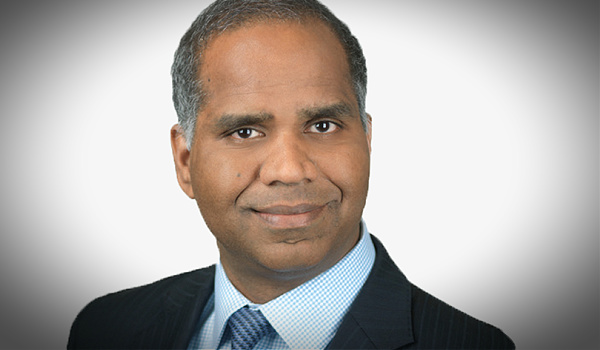Till recently, most enterprises in the financial services industry had been looking at automation merely as a step within a business process. The approach to adopting automation was more tactical than strategic. The focus on automating isolated data entry and integration tasks never graduated to transforming business processes in their entirety. Consequently, the promise of digital transformation never got delivered, and ensuring a delightful customer journey from start to finish remained an elusive dream for firms.
Of course, automation, even in its simplest of forms, has proven to bring results that benefit the enterprise, such as efficiency gains and savings in operational costs. But did this piecemeal approach help in giving a lift to what would matter the most in the future — a refined and complete customer experience?
Today, automation and advanced technologies are pushing the financial services industry to an autonomous future, where professionals will focus less on transactional activities and more on analytics and insights. Advisors will look for higher efficiency and clients will demand for elevated experiences, end-to-end.
Autonomous financial services firms of the future will have highly scalable middle and back offices coupled with an intuitive and highly engaging front-end experience. This will be facilitated by four key aspects: no-code technology wherein new capabilities can be quickly introduced, reliance on Artificial Intelligence (AI) and Machine Learning (ML) as a way of making and improving decisions, a robust data architecture that collects and analyzes information to feed the AI, and end-to-end intelligent automation.
To prepare for this emerging future, financial services firms need to look at adopting automation holistically, says Babu Sivadasan, CEO of JIFFY.ai, an autonomous enterprise platform.
“Transferring data from one system to another was till now considered as a process in isolation,” says Sivadasan. “It might work to some extent; it might even bring benefits, and improve your overall efficiency —but the outcome will seldom be significant.”
According to Sivadasan, JIFFY.ai has combined the powers of AI, ML, cognitive intelligence, analytics and automation into a cohesive autonomous enterprise platform that enables clients to transform their businesses for the evolving future.
JIFFY.ai has pre-packaged engaging front-end and automated middle and back-office tasks for entire business processes in their industry-specific HyperApps, he says. With these highly customizable, low-/no-code, and easy-to-use HyperApps, they have lowered the threshold for business process automation and empowered enterprises to enter the future of autonomous organizations. For their clients, key areas such as data entry, business processes and reporting can happen seamlessly and without any human intervention.
JIFFY.ai’s integrated platform provides a comprehensive view of all automated enterprise business processes so that the client organization can monitor and manage every task closely and use the outcomes to create a better business.
“Rather than adopting a piecemeal approach to automate individual tasks, our platform enables end-to-end enterprise-wide automation, which enables organizations to improve their business processes overall, and ensures a radically different experience for their employees and customers,” says Sivadasan. “That transformative experience can result only from end-to-end automation.”
However, across the industry, many firms have already implemented piecemeal automations, he says, in part because they were only fixing readily apparent problems in their technology and processes. These changes have often led to patched up, broken processes, resulting in a poor experience overall.
And clients may never forget a bad experience, he reiterates.
The piecemeal approach has also led some financial services firms to use variations of processes that were developed and refined over ten years ago—in some cases even 20 years or more—says Sivadasan.
At the same time, clients are getting used to superior experiences from companies like Amazon and Netflix, which have exposed them to a new world of dynamic choices and customized engagements. Quite obviously, they tend to expect the same levels of personalized service from financial services firms as well. While emerging fintech firms are raising the bar of user experience to newer levels every quarter, traditional firms need to focus on covering this ground faster to match their pace.
“While financial services firms were continuing with the same processes, the industry has been moving on, so now they have to adapt to the new world,” he says. “That’s possible only when they look at processes from start to finish, in their entirety. The automations they put in place earlier for better efficiency need to be discarded now as they have to continue to become more efficient in the evolved industry.”
Here Come the Robots
Robotic Process Automation (RPA) is often confused with end-to-end automation, says Sivadasan, but it is more about replacing the human links in a process and not transforming or abridging the process altogether.
“As a bank offering mortgages, you could have very labor-intensive processes,” he says. “Maybe you have a loan origination system and a decision-making system in place. Still some manual decision making, data entry and verification happen there. You get an app filled in by the client, and then you get to an automated system where your staff has to key in the data—robotic process automation eliminates that manual data entry to a large extent.”
Ideally, consumers prefer to have an end-to-end seamless journey whenever they interact with the financial services provider — where their concerns and information can be registered the first time without being asked twice, and fed through to a resolution automatically and quickly. The outcomes and the insights need to be accessible anytime and anywhere for them.
That’s the level of service experience firms like Amazon and Netflix have led consumers to demand.
“Financial services firms need to ask themselves whether their consumers are getting real-time responses. Nimble new-age companies are providing all of their clients with personalized, real-time experiences that are being pushed to them every minute. How do you do that? You can’t accomplish that by simply automating a step in the process. You have to improve the entire digital experience, which includes automation capabilities in the middle and back offices as well. You have to look at it holistically in order to compete and achieve rapid ROI in today’s world.”
Execution focusing on Experience
But how nimble are traditional financial services firms when compared with new fintech companies?
“Every day, new banks open, and they are able to grow by offering accounts with very low balances to people,” says Sivadasan. “A few years ago, traditional banking institutions were not even able to imagine this. There is a spate of new companies that are very efficient and vertically integrated. They are in direct competition with what established, large firms have been doing all along and they are nimble enough to make it available to a broader population, because earlier costs had often got in the way of broadening financial services.”
Even traditional enterprises can implement new processes and automation in a measured manner as long as they’re doing so with the user experience in mind.
“You don’t have to realize the entire enterprise automation journey all at once, you just need to look at ensuring seamless end-to-end consumer experience and allow for changes along the way,” Sivadasan says. “So, 30% to 40% of your processes may end up being automated and transformed, but the rest can remain the same—they will all just be very well connected end-to-end.”
Today, many workers in financial firms don’t need to go to the office to serve their roles; but firms still need them to log in and work across different software platforms—and that need is going away, says Sivadasan. “Systems will make more complex decisions. Most importantly, valuable insights can be derived by analyzing the data generated from automated processes, if done the right way,” he adds.
“I think, in order to gear themselves up for the emerging future, financial services firms need to start with a robust technology review—taking an inventory of all the data they hold and they make use of, because data tells the truth,” says Sivadasan. “Data will tell you the true cost incurred in running each part of your business operations. If you don’t have that data yet, you need to fix that first. Then you can start answering questions about how you could use that data to improve operational efficiency and accelerate growth.”







